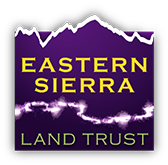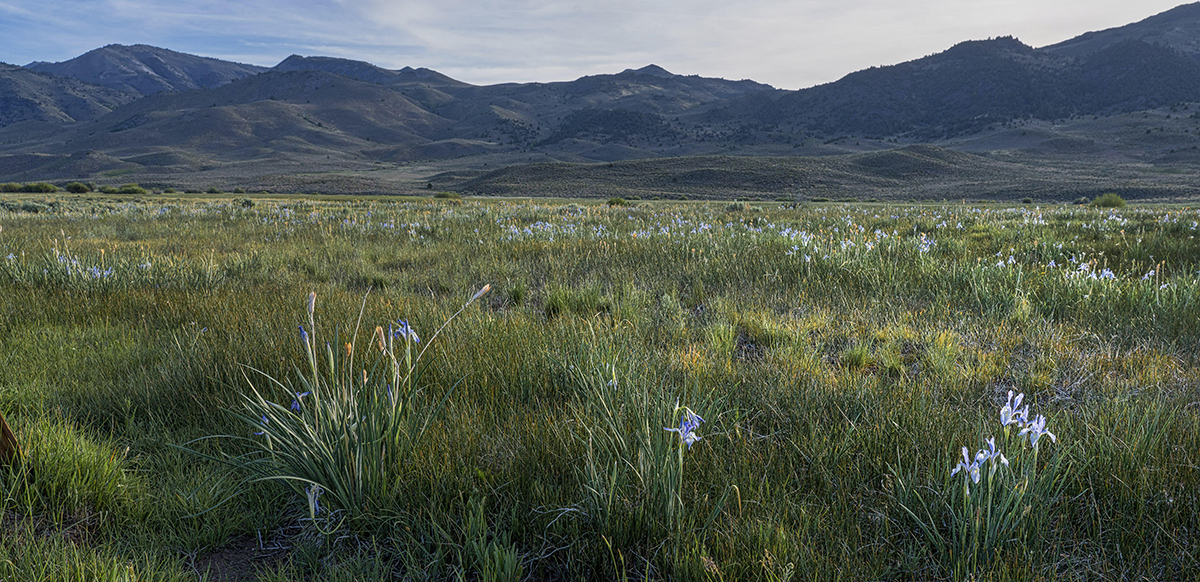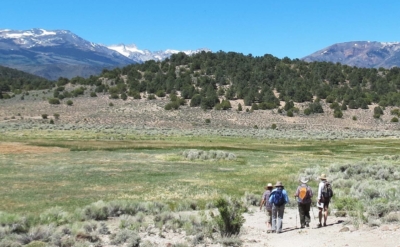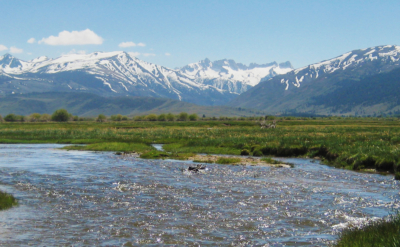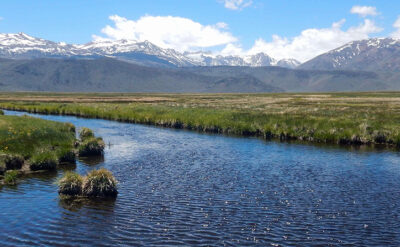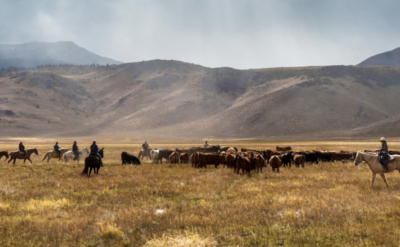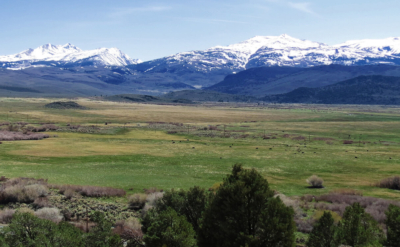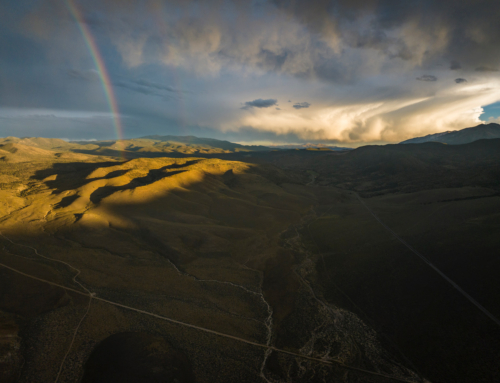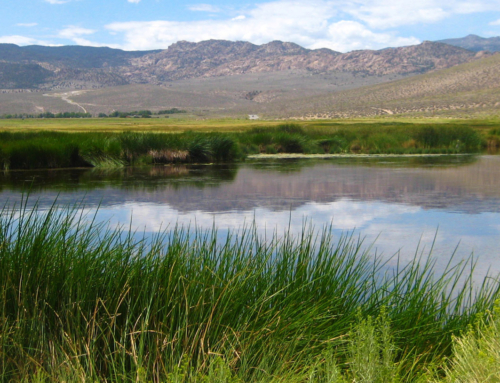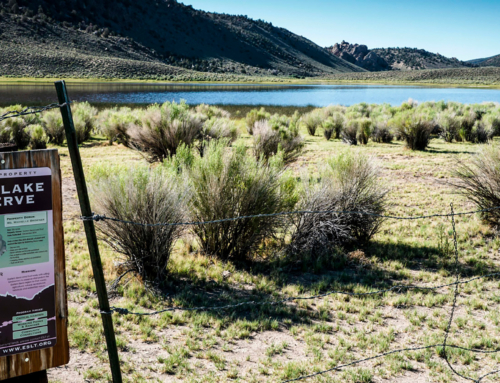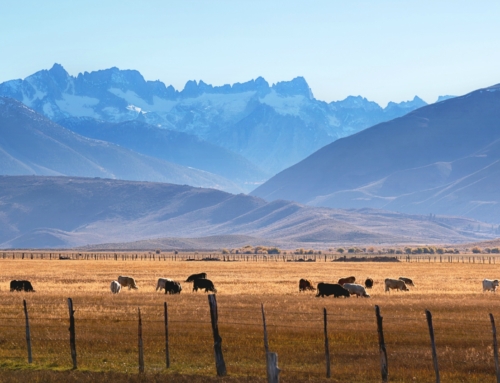Project Description
Please note: Ullman Ranch is private property.
The heart of scenic Huntoon Valley is being preserved for water, wildlife, and sustainable cattle ranching through a conservation easement by rancher George “Corky” Ullman and Eastern Sierra Land Trust (ESLT).
North of the town of Bridgeport, at the foot of the Sweetwater Mountains, five miles of shining creeks and streams curve through bright green meadows in Huntoon Valley. This 1,424 acre seasonal cattle ranch, along the historic stagecoach route between Bridgeport and Devil’s Gate, produces beef cattle on irrigated pastureland and sagebrush steppe. Ullman Ranch protects habitat for Bi-State sage-grouse, which raise their chicks in the ranch’s wet meadows – the “emerald islands” so critical to wildlife in the arid West. By agreeing not to subdivide and develop the ranch, Mr. Ullman is preserving a critical migration route for mule deer and securing habitat for a variety of wide-ranging wildlife such as sage-grouse, bees and butterflies, American badger, eagles, and songbirds.
ESLT worked with Corky Ullman to create the conservation easement, and secured the federal, state, and local funding needed to complete the project. Kay Ogden, Executive Director/CEO of ESLT, said “Mr. Ullman’s generosity meant that ESLT was able to acquire the conservation easement at a reduced purchase price.”
Permanent protection of the working ranch, which has been used for livestock ranching for more than ninety years, helps preserve our rural way of life and the economy of Mono County. Thanks to Corky’s vision, our funding partners, and supporters like you, this beautiful, expansive ranch will remain open and thriving for generations to come.
“I was fortunate to preserve the ranch. At first, I tried to enroll the ranch in the Williamson Act for open space and agriculture, but that program has lost its funding. I didn’t want to develop the ranch. This agricultural conservation easement allowed me to preserve the ranch forever.”
– Rancher Corky Ullman, owner of Ullman Ranch
The Numa (People), or Northern Paiute groups, were hunter-gatherers in the region prior to the arrival of Europeans. John C. Frémont and Kit Carson explored Huntoon Valley, passing through the ranch during their travels from Bridgeport to Swauger Creek and Devils Gate in 1844. For decades prior to Mr. Ullman’s ownership, the Property was used by Mono Land and Livestock Company and the Sario family for sheep ranching. The original stagecoach stop (the red barn beside Highway 395) built in the 1800s is still in use on the ranch.
A Harmony of History and Habitat
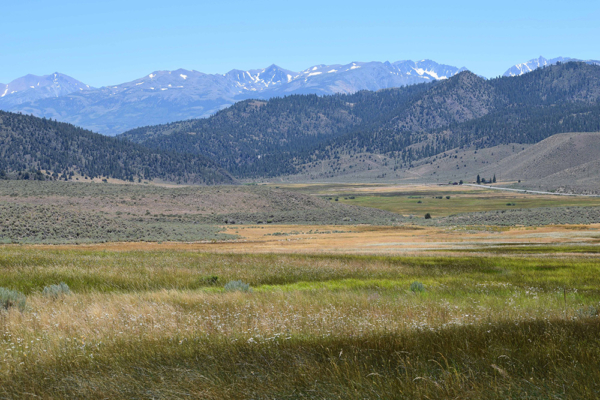
Corky’s dedication to conservation led him to protect the ranch’s native grasslands, wildlife habitat, and scenic views forever with a conservation easement. This amazing result comes after years of hard work, and that was made possible by supporters like you.
A conservation easement property protects conservation values such as wildlife habitat, while allowing livestock grazing and providing continued economic benefits for the region. These benefits take the form of jobs, agricultural productivity, and ecosystem services.
This new conservation easement ensures that Corky can continue to own and operate the ranch as it has been since the 1800s, contributing to the Eastern Sierra community and economy.
The conservation easement also restricts certain future uses and limits subdivision, ensuring that the heart of Huntoon Valley will remain open and scenic forever, for people and wildlife.
By agreeing not to subdivide and develop the ranch, Corky preserved a critical migration route and secured habitat for a variety of wide-ranging species. The ranch provides wildlife room to roam, protecting neighboring public and private lands.
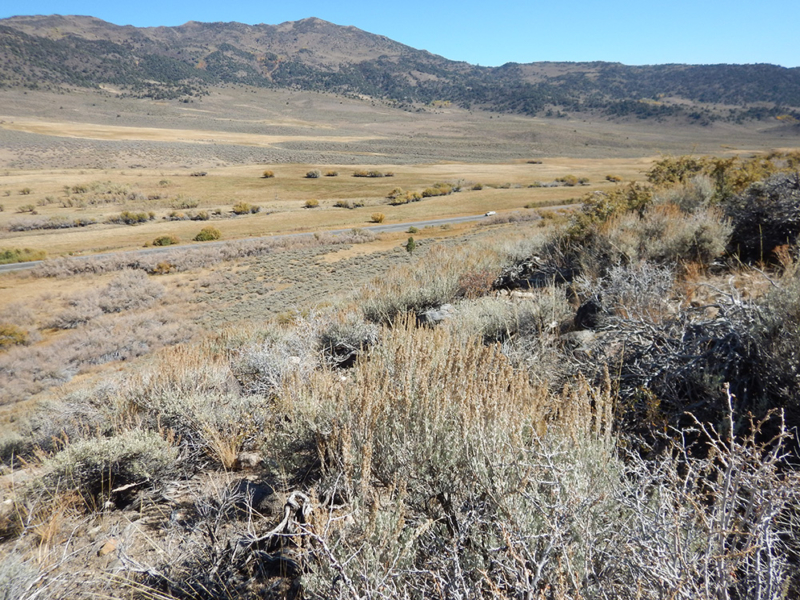
Meet the Wildlife that Thrive on Ullman Ranch
Ullman Ranch provides homes for a wide range of iconic Eastern Sierra wildlife and has long been a priority for conservation.
Mule deer migrate to Ullman Ranch each year. The ranch is within the migration corridor and summer range of the East and West Walker mule deer herds, with several hundred deer passing through the valley annually.
Bi-State sage-grouse gather on nearby leks for their famous annual mating dance. Sage-grouse hens then nest in sagebrush on the ranch and bring chicks to the ranch’s green meadows to forage.
Sierra Nevada bighorn sheep live in alpine areas nearby. The ranch provides a buffer for alpine habitat used by the federally-endangered Sierra Nevada bighorn sheep.
American badger live in the ranch’s grasslands and low canopies of sagebrush and bitterbrush. This fossorial (digging) mammal is a California Species of Special Concern, and requires wide open, undeveloped areas like Ullman Ranch to thrive.
About the Funders
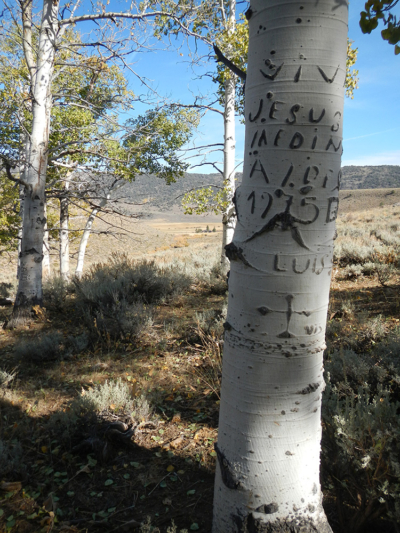
Funding for this project was provided by USDA’s Natural Resources Conservation Service (NRCS) and the California Strategic Climate Investments Sustainable Agricultural Lands Conservation program.
NRCS provides financial and technical resources that help landowners and partners protect the nation’s most productive grasslands, wetlands, and agricultural lands by providing funding to purchase easements on private working lands. NRCS’ Agricultural Conservation Easement Program that protects grasslands of special significance provided funding for the Ullman Ranch conservation easement because of the habitat the ranch provides for Bi-State greater sage-grouse.
The Ullman Ranch project was supported by California Climate Investments (www.caclimateinvestments.ca.gov), a statewide program that puts billions of Cap-and-Trade dollars to work reducing greenhouse gas emissions, strengthening the economy, and improving public health and the environment– particularly in disadvantaged communities. The Cap-and-Trade program also creates a financial incentive for industries to invest in clean technologies and develop innovative ways to reduce pollution. California Climate Investments projects include affordable housing, renewable energy, public transportation, zero-emission vehicles, environmental restoration, sustainable agriculture, recycling, and more. At least 35 percent of these investments are located within and benefiting residents of disadvantaged communities, low-income communities, and low-income households across California.
“Because of Corky’s vision, this scenic valley with a rich history will remain as it is today – a working landscape that is home to wildlife. I’m also thankful for the feeling of peace I get when I see the beautiful, wide open valley before me, and that is something that all of us can feel just driving past it on Highway 395.”
– Kay Ogden, Executive Director/CEO of Eastern Sierra Land Trust
Learn more about conservation in Bridgeport Valley.
